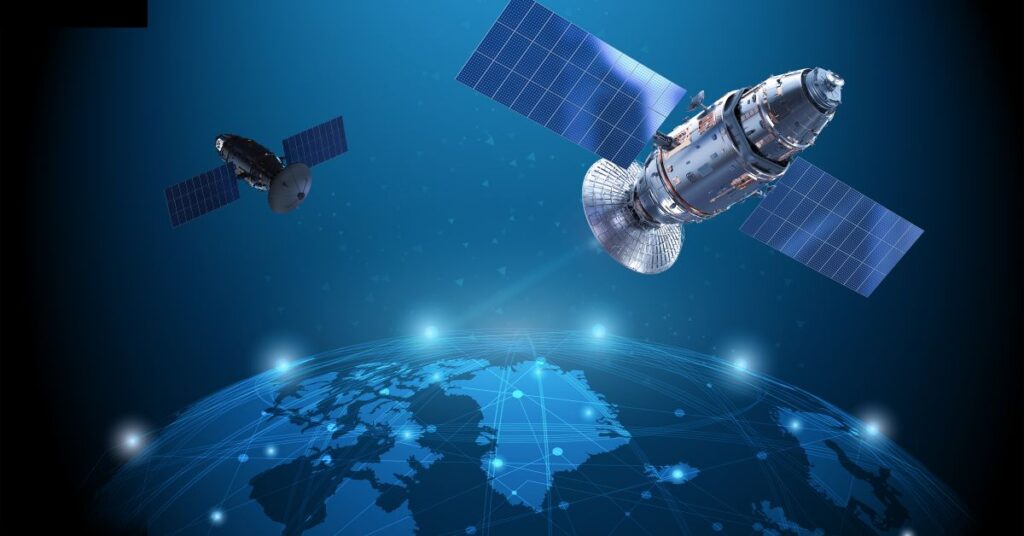
Military Veteran
Discount: $50 OFF

SpaceX’s fleet of Starlink satellites has expanded significantly, contributing to more than 20% of all space objects that are monitored. Starlink is set to revolutionize our utilization of the Earth’s upper atmosphere by deploying tens of thousands of additional satellites. Pro Starlink Installers™ is a professional Starlink installation company focused on offering the best Starlink installation service to its clients. We are nationwide Starlink Installers covering installation services worldwide.
Before eventually moving towards Starlink and Orbit, we can first dwell into what is orbit.
An orbit refers to the curved trajectory that celestial bodies, such as stars, planets, moons, asteroids, or spacecraft, take as they move around another object due to the force of gravity. Gravity acts on objects with mass, drawing them towards other masses in their vicinity. If this attraction pulls them close enough, they can start to move around each other.
Objects of similar size interact with each other in a way that neither occupies the center, while smaller objects orbit larger ones. The Moon orbits Earth, while Earth orbits the Sun within our Solar System. Nevertheless, this doesn’t indicate that the bigger objects are completely motionless. The Moon’s gravitational pull causes the Earth to wobble slightly, resulting in the ocean tides we experience. Similarly, the Earth and other planets exert a slight gravitational pull on the Sun, causing it to be displaced from its center.
When the Solar System was originally formed, particles of dust, gas, and ice rushed through space, resulting in a cloud that enveloped the Sun. The Sun’s immense size compared to the tiny dust and gas fragments allowed its gravity to capture these particles, resulting in them swirling around it and creating a surrounding ring.
Gradually, these small fragments started to clump together and grow larger, resembling snowballs rolling down a slope, eventually transforming into the planets, moons, and asteroids we observe today. All the planets were formed at the same time, which explains why they orbit the Sun in the same direction and remain in a relatively flat plane.

SpaceX’s Starlink satellite internet has transformed from an ambitious notion into a prominent service in near-Earth space in just a few short years. As of April 8, 2024, a total of 5,698 Starlink satellites are currently in space, with 5,765 of them actively operational. The company has already dispatched 6,166 Starlink satellites and has plans to introduce numerous additional units over the next few years.
One may find it challenging to comprehend the true scale of the Starlink satellite network. Consider this: the 5,765 operational Starlink satellites account for over 20% of all objects we can monitor in Earth’s orbit and nearly half of the total equipment in space. The number of Starlink satellites now surpasses the total of all other operational satellites combined.
SpaceX’s numerous launches have enabled this swift expansion. The company has been consistently launching Starlink missions using its reusable Falcon 9 rocket, deploying 60 or more satellites with each flight. Throughout 2023, SpaceX successfully deployed more than 2,000 Starlink satellites, performing launches roughly every five days.
The fast rise in the number of Starlink satellites has resulted in various disagreements. Astronomers are concerned about the impact that large clusters of satellites may have on our observations from Earth. Shortly after their launch, Starlink can appear as bright streaks in telescope images, obscuring dim stars and other celestial bodies.
In response to these issues, SpaceX is implementing measures to minimize satellite reflections. Special coatings are being added to the satellites, and their positioning is being altered to reduce the prominence of reflections. However, given the planned deployment of thousands of Starlink satellites, it remains uncertain whether these measures will sufficiently address the significant impacts.
Another concern is the increased likelihood of collisions and an accumulation of debris in outer space. The presence of numerous satellites in low Earth orbit increases the risk of collisions between them. Each time a collision occurs in space, it can generate thousands of tiny fragments of debris. These fragments may collide with other objects, triggering a series of additional collisions known as Kessler syndrome.
SpaceX has emphasized that Starlink satellites can autonomously avoid collisions and will safely deorbit when they are no longer in use, preventing the accumulation of space debris. However, due to the large quantity of Starlink satellites, even a few malfunctions can significantly exacerbate the issue of space debris.
As of April 2024, the United States Space Surveillance Network is monitoring a total of 28,639 space objects. This encompasses both operational and non-operational satellites, discarded rocket components, and space debris. Starlink is rapidly gaining significance, highlighting the swift changes occurring in low Earth orbit (LEO).
The proliferation of large satellite constellations like Starlink prompts serious considerations about the ethical use of space in proximity to Earth. What is the maximum number of satellites that can be accommodated in Low Earth Orbit (LEO) without safety concerns? Over time, what implications will this have for star-gazing, space debris, and the secure operation of other satellites? How can we assess the benefits of global internet access in comparison to its potential risks?
These questions will require contemplation from those involved in the field of space worldwide over the next few years. With the ongoing expansion of Starlink and various large satellite constellations, establishing robust international regulations for the safe operation of low Earth orbit (LEO) is crucial.
The changes in Starlink are underway and you need professional Starlink installation services to reduce any pitfalls. It is also evident that the landscape of LEO will be quite different from this point onward. Although we value the remarkable development of the global satellite internet and its likely advantages, we must also reflect on how it could influence the future of our space environment. The decisions we make today will have long-lasting impacts on the trajectory of the Earth in space for years to come.
Are you seeking professional Starlink installers near you? We are here to help you ease all your concerns related to installation.
Share via:

[…] the best angle and orientation. The test confirmed that the dish maintains a clear line of sight to Starlink satellites, ensuring the highest possible download and upload speeds with minimal latency. See what […]